N. Gemini Sasson's Blog, page 10
October 19, 2012
International Gathering of the Clans 2014
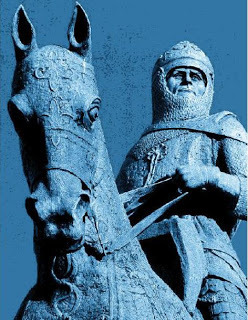 For those who would like to celebrate their Scottish roots, there will be an International Gathering of the Clans to be held in conjunction with the event Bannockburn 700, June 24th, 2014. This will be 700 years after Robert the Bruce defeated the forces of Edward II of England at the Battle of Bannockburn. For more information:
For those who would like to celebrate their Scottish roots, there will be an International Gathering of the Clans to be held in conjunction with the event Bannockburn 700, June 24th, 2014. This will be 700 years after Robert the Bruce defeated the forces of Edward II of England at the Battle of Bannockburn. For more information:The Gathering 2014 (on Facebook)
Clans 2014
Bannockburn 700 (on Facebook)
I see Clan Gordon will have a tent there. Hoping some of my other ancestral families (Bruce, Douglas, Stewart, Johnston, etc.) will be in attendance. Sounds like a great excuse for a research trip/second honeymoon!
Until later,
Gemi

Published on October 19, 2012 06:51
October 12, 2012
Interview at Martin Lake's Writing Blog
Today, I'm over at Martin Lake Writing talking about the writers who inspired me, what my 'typical' writing day is like and my favorite moment so far as a writer.
In other news, I just received the final edits from my wonderful editor Derek Prior at Homonculus Editing Services. Expect a stretch of silence on this end for a couple weeks as I give Uneasy Lies the Crown, A Novel of Owain Glyndwr, its final spit polish and begin formatting for release sometime next month. I'm also reviewing proofs for the cover from the talented Lance Ganey. Can't wait to reveal the final version when it's ready!
Until later,
Gemi

In other news, I just received the final edits from my wonderful editor Derek Prior at Homonculus Editing Services. Expect a stretch of silence on this end for a couple weeks as I give Uneasy Lies the Crown, A Novel of Owain Glyndwr, its final spit polish and begin formatting for release sometime next month. I'm also reviewing proofs for the cover from the talented Lance Ganey. Can't wait to reveal the final version when it's ready!
Until later,
Gemi

Published on October 12, 2012 05:57
September 4, 2012
The Uniting of Wales
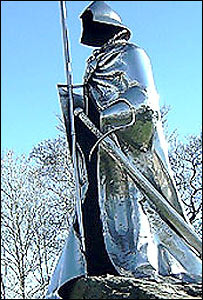
The Uniting of Wales
Llywelyn ap Iorweth accrued several Welsh territories during the first decade of the thirteenth century through both might and guile. For a while, he continued with the tradition of accepting an English overlord, but when he confidently declared himself as prince of all Wales in 1210, it was too much for King John of England to tolerate. King John marched on Wales and had nearly unseated Llywelyn, when troubles with his own barons forced him to return home and sign the Magna Carta. Llywelyn continued to accumulate Welsh territories, forcing the princes of Powys and Deheubarth to swear fealty to him. Prince Llywelyn, who was later known as Llywelyn Fawr (the Great), was far-sighted enough to ensure that the complete inheritance of all his holdings to his son Dafydd was recognized early on, thus breaking with the tradition of gavelkind. However, Llywelyn also had an older, illegitimate son named Gruffydd, and Welsh law recognized all heirs, whether born in or out of wedlock.
Knowing that his half-brother Gruffydd posed a threat to his rule, Dafydd had him imprisoned. King Henry III of England marched on Wales and Dafydd was forced to hand Gruffydd over, putting Dafydd in a very compromising position. He then publicly acknowledged Henry as his overlord. When Gruffydd fell to his death in 1244 trying to escape from the Tower of London, Dafydd mustered his forces to oppose Henry. But the uprising was over essentially before it began, as two years later Dafydd took ill and died without issue. Gruffydd, however, had left four living sons behind. Thus, another power struggle ensued.
Llywelyn ap Gruffydd was barely in his twenties when his uncle and father died. Patiently, he built alliances and finally went to battle against two of his own brothers, defeating them and imprisoning the oldest. Henry III’s attempts to subdue Wales failed and inevitably he was forced to recognize Llywelyn as the Prince of Wales.
Meanwhile, Llywelyns’ troubles with his brothers continued and further complications arose when his betrothed, Eleanor de Montfort, was held captive by the new English king – Henry III’s son, Edward I. Only after a forced submission and the relinquishment of much of his holdings was Llywelyn able to bring his bride-to-be to Wales. A few years later she gave him a daughter, but sadly died in childbirth.
In 1282, on a bridge over the River Irfon, Prince Llywelyn (later known as ‘Llywelyn the Last’) was killed. His head was delivered to London and set on display. With this powerful Welsh prince removed, Edward I, also known as Longshanks, thought to end the Welsh rule of Wales once and forever by investing his son, later Edward II, as ‘Prince of Wales’. For the next century, that coveted title passed down through the Plantagenet line of England to the future Richard II. It is a title still employed today for future kings of England.
*****
Until later,
Gemi

Published on September 04, 2012 10:52
August 24, 2012
A Fractured Wales
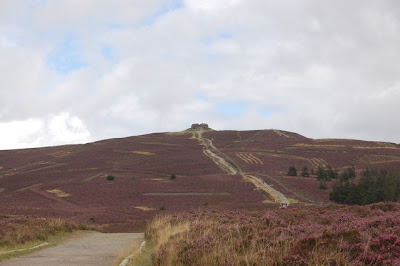 (Offa's Dyke)
(Offa's Dyke)As my next historical novel nears completion, I'll be bringing you some history on medieval Wales. This book features Owain Glyndwr, the last Welsh Prince of Wales, and also includes: Harry Hotspur, Richard II, Henry IV and a young Henry V. Owain's life bears many similarities to that of Robert the Bruce, and it has been speculated that he emulated the Bruce and patterned many of his military practices and diplomatic policies on those of the King of Scots. In many ways, however, his story is markedly different.
The working title of the book is Uneasy Lies the Crown, A Novel of Owain Glyndwr, and its expected release date is the end of 2012. For now, here's a little background on the Wales before Owain's time:
*****
A Fractured Wales
During the Dark Ages, both of what are now present-day Wales and England were fractured into numerous, smaller kingdoms. In the late eighth century, King Offa of Mercia built a dike extending approximately 180 miles from the estuary of the Dee River, down across the Severn, and on south to the mouth of the Wye. Whether undertaken to thwart raids by the hill-inhabiting Welsh into pasture-rich Mercian lands or as the result of a mutually agreed upon drawing of lines is unclear, but Offa’s Dyke defined the limits of the general Welsh border for centuries on.
East of the Severn, the divided kingdoms were eventually melded into one when Althelstan became the first King of all England in the tenth century. Well into the thirteenth century, Wales was still divided into four main principalities: Gwynedd in the north, Powys in the central lands, Dyfed in the southwest and Deheubarth in the south.
Perhaps one of the greatest contributors to this ongoing fragmentation of medieval Wales lay in the practice of fostering out the sons of noblemen. Being raised in separate households, blood-brothers often had little personal knowledge of each other and consequently less likelihood of developing any affection for or loyalty to one another. Also, in much of medieval Europe the eldest son would inherit his father’s titles and thus the bulk of the lands, a practice called primogeniture. In Wales, however, inheritances were divided amongst sons – a practice called partible succession or gavelkind – thus weakening centers of power, furthering divisions and setting the stage for bitter sibling rivalries.
Welsh princes sometimes sought out and accepted the overlordship of English kings in order to gain protection from neighboring chieftains or even their own kin. In 926, King Athelstan exacted tribute (payment in return for peace) from several Welsh princes, including Hywel Dda of Dyfed who eventually became the ruler of three-fourths of Wales through inheritance. He aligned himself closely with the English king, visiting the English court frequently, and later standardized the laws of Wales – an act for which to this day he is still remembered. Upon his death, though, his kingdom was split amongst his three sons and for yet another century Wales remained divided.
Homage (a formal acknowledgement of allegiance) given to English kings became routine for Welsh lords and costly tributes were doled out regularly, but later the Welsh were often even required to supply troops to the English to support military campaigns elsewhere. Welsh archers, renowned for their skill with the longbow, and Welsh pikemen were routinely employed in English armies in campaigns in France and Scotland.
In the middle of the eleventh century, the ambitious Gruffydd ap Llywelyn of Powys united north and south Wales for a brief period before Earl Harold of Wessex had him pursued into the wilderness and killed. Earl Harold later became King Harold of England, until William of Normandy defeated him at Hastings in 1066. Norman keeps were then constructed throughout Wales and were garrisoned with English soldiers to keep the locals in check. English lords, many of Norman descent, increasingly controlled the civil administration of Wales.
*****
Next up - the uniting of Wales.
Until later,
Gemi

Published on August 24, 2012 10:18
July 24, 2012
The Crown in the Heather is ... FREE!
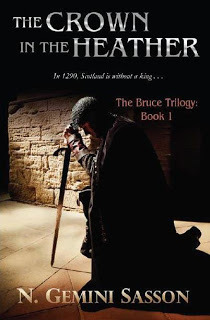 This is a quick public service announcement to let everyone know that The Crown in the Heather (The Bruce Trilogy: Book I) is now free as an e-book on Amazon.com, Amazon.co.uk, Barnes and Noble, Apple iTunes and Smashwords.
This is a quick public service announcement to let everyone know that The Crown in the Heather (The Bruce Trilogy: Book I) is now free as an e-book on Amazon.com, Amazon.co.uk, Barnes and Noble, Apple iTunes and Smashwords.I'll report back later as to how having the first book in a series as perma-free affects sales of related books. So far it's going nicely. CITH got as high as #16 free overall in the Kindle store when E-Reader News Today picked it up. After just over a week, total downloads have exceeded 20,000.
So 'Hooray!' to new readers.
Meanwhile, I took a much needed month off from promotion, following my recent blog tour. I've also published five books in less than two years, so my brain (understandably) was getting a little scrambled. Since early June, I've read some phenomenally good books (which I'll list on a blog post shortly), cleared the brush out of the fence rows (I miss my sheep - they were good at that), weeded gardens, taken my dog to obedience class, gone on a lot of bike rides and am immersing myself in major revisions for an upcoming historical novel on Owain Glyndwr of Wales (more to come on that soon).
For those who would like to know some of what went on in Edward III's life in his waning years, I recommend Anne O'Brien's excellent historical novel: The King's Concubine: A Novel of Alice Perrers. For those not familiar with the events of the times, Alice Perrers was mistress to Edward III later in his life. O'Brien does a stupendous job of creating a sympathetic character out of Alice, who has been much maligned in history. I loved the narrative voice in this book and found it very compelling.
Here's wishing everyone a safe and fun summer!
Until later,
Gemi

Published on July 24, 2012 10:32
June 6, 2012
Sometimes a Winner Finishes Last
Springfield News-Sun article:
WLS State Champ Lends a Helping Hand
Bellefontaine Examiner article:
Tigers’ Vogel wins title in 1,600, aids fallen runner in 3,200
Last week, our family of four piled into the car and spent the day at the Ohio High School State Track Meet, as we do every year. It was a little overcast, breezy and an unusually cool 70 degree day - a welcome change from the usual 90+ degrees when tens of thousands melt on the metal bleachers. Every year we get to see a few records go down. Luckily, since our kids graduated recently, we're still familiar with some of the athletes participating. This year was a special treat, though, because there was one of those great moments in life that I'll never forget.
Earlier in the day, Meghan Vogel of West Liberty Salem High School had won the Girls' Division III 1600 meter run in her first sub 5:00 minute performance ever, defeating a former state champ who she'd never beaten before that day. Humble and bubbling, she was beside herself with excitement afterwards. Later, she joined the entrants in the 3200 meter run, but by a few laps into the race it was apparent she'd expended her energy on the race of her life already and so she settled into the back of the field. The winner came across the line and one by one all the rest. Vogel was on the backstretch by then, in last place.
As Vogel came to the top of the homestretch, everyone in the stadium became focused on another runner, Arden McMath who, with less than 50 meters to go, stumbled, went down to the ground, got up and stumbled again. Fatigue had taken its toll. The officials rushed towards McMath, but then backed off. You see, if they had aided her in finishing, it was grounds for disqualification. So all they could do was wait and watch. As long as she was still moving, they were going to let her finish the race.
Behind her, Vogel closed the distance. McMath went down again. This time she didn't look like she was going to go on. Vogel stopped, lifted her up and helped her to her feet. McMath's arm slung over Vogel's shoulder, they walked step by step toward the finish line. The crowd came to its feet in applause. When the pair reached the line, Vogel let go of her and made sure that McMath stepped across the line first. Everyone glanced at the officials, waiting for the yellow flag to go up in the air, signalling a rule violation. It never did.
In the face of that selfless moment, the officials chose to publicly ignore a technicality and acknowledge the sportsmanship. I still get teary-eyed when I think of it. Vogel could have run past her and no one would have thought anything of it. The officials could have DQ'd both girls; they didn't.
It was a very noble moment on many fronts and I'm glad I was there to witness it.
Kind runner helps rival go the distance (The Columbus Dispatch)
Flotrack Video: Meghan Vogel stops to help fallen runner at 2012 Ohio State Meet
Flotrack Video: Interview with Meghan Vogel after her 1600 meter win
Until later,
Gemi


WLS State Champ Lends a Helping Hand
Bellefontaine Examiner article:
Tigers’ Vogel wins title in 1,600, aids fallen runner in 3,200
Last week, our family of four piled into the car and spent the day at the Ohio High School State Track Meet, as we do every year. It was a little overcast, breezy and an unusually cool 70 degree day - a welcome change from the usual 90+ degrees when tens of thousands melt on the metal bleachers. Every year we get to see a few records go down. Luckily, since our kids graduated recently, we're still familiar with some of the athletes participating. This year was a special treat, though, because there was one of those great moments in life that I'll never forget.
Earlier in the day, Meghan Vogel of West Liberty Salem High School had won the Girls' Division III 1600 meter run in her first sub 5:00 minute performance ever, defeating a former state champ who she'd never beaten before that day. Humble and bubbling, she was beside herself with excitement afterwards. Later, she joined the entrants in the 3200 meter run, but by a few laps into the race it was apparent she'd expended her energy on the race of her life already and so she settled into the back of the field. The winner came across the line and one by one all the rest. Vogel was on the backstretch by then, in last place.
As Vogel came to the top of the homestretch, everyone in the stadium became focused on another runner, Arden McMath who, with less than 50 meters to go, stumbled, went down to the ground, got up and stumbled again. Fatigue had taken its toll. The officials rushed towards McMath, but then backed off. You see, if they had aided her in finishing, it was grounds for disqualification. So all they could do was wait and watch. As long as she was still moving, they were going to let her finish the race.
Behind her, Vogel closed the distance. McMath went down again. This time she didn't look like she was going to go on. Vogel stopped, lifted her up and helped her to her feet. McMath's arm slung over Vogel's shoulder, they walked step by step toward the finish line. The crowd came to its feet in applause. When the pair reached the line, Vogel let go of her and made sure that McMath stepped across the line first. Everyone glanced at the officials, waiting for the yellow flag to go up in the air, signalling a rule violation. It never did.
In the face of that selfless moment, the officials chose to publicly ignore a technicality and acknowledge the sportsmanship. I still get teary-eyed when I think of it. Vogel could have run past her and no one would have thought anything of it. The officials could have DQ'd both girls; they didn't.
It was a very noble moment on many fronts and I'm glad I was there to witness it.
Kind runner helps rival go the distance (The Columbus Dispatch)
Flotrack Video: Meghan Vogel stops to help fallen runner at 2012 Ohio State Meet
Flotrack Video: Interview with Meghan Vogel after her 1600 meter win
Until later,
Gemi

Published on June 06, 2012 05:16
June 4, 2012
Celebrating a Milestone: 50,000 Kindle Books Sold
 (My assistant Trim [lower right] taking a break.)
(My assistant Trim [lower right] taking a break.) Two years ago when I decided to stop pursuing the traditional route of publication and independently publish, I had hopes of selling a few hundred books. Sure, every writer wants to be a bestselling author, but I figured I'd be happy if someone other than friends and family simply knew my work existed.
I'd long ago lost count of the number of rejections I've received, at first from agents and eventually from editors. When I initially put my debut book on Kindle, there were days I clicked on my KDP sales report page and didn't get a single sale. Sometimes that went on for most of a week. Great big goose eggs. Oh well, I tried.
Yet something kept me going: supportive family, a champion agent and fellow writers. Along the way, I had crit partners who were persistent in their encouragement, even when I didn't have confidence in myself, and who made suggestions in a helpful, positive way that made my writing better. I remember the phone call from a successful agent (OMGosh, someone was actually interested in my books!) that had me so excited I almost burst. I can't neglect to mention my two children who allowed me to ignore them so I could write and the husband who made sure that dinner was on the table when I was absorbed in my work.
And one day, along came my first fan mail. It was January of 2011. I'd been self-published for seven months. I thought surely this was just some kind soul taking pity on me and spreading random kindness. Now, I can glance up at the wall behind my desk (above) and see it papered with e-mails and FB posts and tweets from readers. Yes, real readers. I sure as heck don't know that many people! I'm still amazed that anyone would take the time to write to an author, least of all me.
Yesterday, my KDP sales report page ticked over with my 50,000th Kindle sale on Amazon. Honestly, it feels more than a little surreal.
Just in case you think that's something spectacular, here's a list of indie authors and their sales figures for April 2012: Top 100 Indie Authors. It's not a comprehensive list, as some indie authors are more public with their numbers than others, but Holy Smokes! It's amazing how well some self-published authors are doing. Here's another thread on Kindleboards listing authors with over 50,000 sales.
 I'm taking a moment out to celebrate and say THANK YOU! to all the readers who made this milestone possible, as well those who provided moral support and shared their knowledge along the way. I am humbled and eternally grateful.
I'm taking a moment out to celebrate and say THANK YOU! to all the readers who made this milestone possible, as well those who provided moral support and shared their knowledge along the way. I am humbled and eternally grateful.Success, however small or large, never happens without a little help from others. Whatever your dreams, wherever you're starting from, however far you have yet to go, remember - one step at a time, stay the path and (as Oprah used to say) surround yourself with angels. They're there if you look for them. I've been lucky enough to find more than a few along the way.
Until later,
Gemi

Published on June 04, 2012 06:42
June 1, 2012
Author Rebecca Lochlann Talks About Ancient Volcanic Eruptions
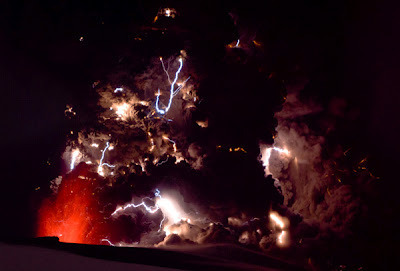
(I've long had a fascination for geologic events, particularly volcanic eruptions. The powerful forces behind these cataclysmic events often have far-reaching and long-lasting effects. They alter the earth, destroy life and even entire civilizations. Today, even though we still can't predict them, at least we understand what is going on beneath the earth's surface. Imagine living in an age when volcanoes were not only unpredictable, but mysterious entities. My talented author-friend Rebecca Lochlann deals with this in her newly released book, The Thinara King, which I highly recommend. I asked her to tell us some more about it. So, welcome, Rebecca!)
*****
The island in the Mediterranean nowadays called Santorini has had many names throughout the centuries. One of the oldest known names, and the one I use, is Callisti. In ancient Greek, it means “The Most Beautiful,” and is alternately spelled Kalliste.
Strongyle, another of Santorini’s ancient names, meant, “The Round One.”
Thera, yet another name long used for this volcanic island, can be translated as “Fear,” which, as it turns out, was rather prophetic, as is the name of the central mountain, rumored by some to be Alcmene,meaning “Wrath of the Moon.”
Book number two of my series, The Thinara King , jumps right in the middle of this famed volcanic eruption on Callisti.
For many years, until “super” volcanoes were more clearly understood, this eruption was considered the worst in human history. It was so enormous, so destructive, (categorized as a Plinian type event) that it made the eruption of Tambora look like a tiny belch in the earth. It would have made the Mt. Saint Helen’s eruption seem like nothing more than a brief, sleeping baby’s gasp.
As scientists become more adept at studying the effects of volcanoes, (and it’s impressive how much they’ve learned about the Santorini volcano, even though it happened so very long ago), they have conjectured that the repercussions of this event went clear round the world, and probably affected the earth’s climate for many years. From the depth of the ash on the sea floor, they have determined that the worst damage done to Crete, a mere seventy miles away, was on the east side. With improved methods and the study of more recent eruptions, there are now conjectures that the pyroclastic flow (the most dangerous, murderous part of an eruption) could very well have traveled on top of the water clear to Crete. The idea that such a thing could happen is amazing, and is merely theory, not proven. But that’s how huge this eruption was. Tsunamis of course came along after, and devastated the entire coast; there are theories that the tsunami which struck the northern coast managed to flow clear into the city of Knossos. Charles Pellegrino, in his book Unearthing Atlantis, says: “Within hours of the Theran upheaval of 1628 BC., death rolled into southern Turkey on the tongue of a tsunami. Two peninsulas jutting into the Aegean Sea confined the wave as if between the prongs of a mighty tuning fork, building it higher and higher and ultimately funneling it thirty miles inland. To penetrate so far, it had to be eight hundred feet tall when it hit the shore.” (Pellegrino, C. Unearthing Atlantis. New York: Avon, 1991)
One small bit of positive news: recent theories state that most of the populace on Santorini actually managed to escape the island before it blew into the heavens, leaving nothing but a sliver (part of which is again beginning to send out ominous messages). The volcano gave them warning, and they apparently heeded this warning. Since Callisti is considered by many to be an outpost of Crete, it’s no leap of logic to assume most of the refugees would go there, and that’s what happens in my book.
As awful as this eruption was, it did not end Cretan society. I have no doubt many died of the aftereffects, like starvation, ash suffocation, etc. But the Cretan civilization did eventually recover. Yes, these intrepid, hardy people managed to survive and even thrive again after this indescribable event. But at some point, later, the wondrous Bronze Age society of Crete (or Kaphtor) did disappear. This segment of my series, (a trilogy) offers one possible reason why, sets the starting point for the later books, and initiates a more familiar history—one that might never have occurred had Crete survived, retaining its original power and influence.
From everything Plato said about Atlantis, there is no doubt in my mind Thera is that fabled place.
Here is an excerpt from deep within The Thinara King.

Twilight fell. Chrysaleon made a fire from dead olive branches. The last glow of sunlight transformed gray clouds to scarlet and lavender, with hints of green and yellow. Beneath this magnificence he constructed a pyramid of stones and shot an unwary hawk from the sky. He burned its thighs in offering and knelt beside his cairn, clenching the necklace in his fist.
“Poseidon,” he said. “Walk with me. Lead me to Aridela. Make our bond unbreakable. Help me slay Harpalycus and bring an end to the king-sacrifice.” He peered into the heavens. “Make me this great-year-king, Horse Tamer, and I will present you with the rich island of Crete. I will cover this land with temples and fill each one with your image.”
A sudden gust of wind shot a fan of sparks into the dimming indigo sky.
He took it for the answer he wanted. Chrysaleon wrapped himself in the cloak Neoma had given him. “Bring Aridela home,” she’d begged, clutching his arm. “I miss her. I don’t think she even knows I’m alive.” The stone that struck her during the worst of the Destruction had left a noticeable depression in her forehead, like a large, out-of-place dimple, and ongoing headaches forced her to spend time in darkened seclusion nearly every day.
He stared at his fire, sleepless, thinking of Aridela, longing for her. A memory crept before him, one he’d forgotten, from his time near death in the cell at Labyrinthos.
In his starved, thirsty mind, he’d experienced a vision of Menoetius transforming into a black bull, the enormous bad-tempered kind Cretans used in their ring. The beast gored him and as he lay gasping, his lifeblood seeping away, Aridela came to stand beside the bull, resting her hand on his neck in an intimate manner. She had looked down upon Chrysaleon without any emotion.
“No,” he’d whispered, and he did so again now, his teeth and hands clenching as he gazed into the cold night sky. “Menoetius won’t defeat me.”
He fell asleep at last, but during the night’s blackest point, he was awakened by the earth shuddering. Small creatures scurried; rocks scraped, rolled, and tumbled. His horse shied and nickered. Farther away, he heard ominous, eerie echoes as an avalanche of boulders crashed into one of Crete’s many precipitous gorges.
He stared into the night toward the mountains, aching to be among them.
I’m coming, Aridela. I will find you.
*****
More excerpts can be found here and here.
The Year-god’s Daughter: Book One of The Child of the ErinyesThe Thinara King: Book Two of The Child of the ErinyesIn the Moon of Asterion: The conclusion of the Bronze Age trilogy (available by the end of 2012)
Website: http://rebeccalochlann.comAmazon Rebecca Lochlann page: http://tinyurl.com/73u82kgBlog and excerpts: http://rebsthoughtsandinspirations.blogspot.com/
Thanks for visiting with us, Rebecca!
Happy reading, Gemi

Published on June 01, 2012 10:03
May 28, 2012
Virtual Book Tour May 28 - June 15: The King Must Die
Join me as I tour the blogosphere in a virtual book tour for The King Must Die (a novel of Edward III). For those interested in the research that went into this book and Isabeau, the writing process, a smattering of my writerly quirks and the occasional deep pondering from yours truly, this is your chance to stalk... I mean, learn more. ;-)
Did I mention there's a $25 Amazon gift certificate available to one random commenter during the tour?
Here are the stops along the way (I'll return every couple of days to update the exact links as they occur):
May 28th - Lisa Haselton's Reviews and Interviews
May 29th - A Chick Who Reads
May 30th - Sexy Adventures, Passionate Tales (Author Isabel Roman)
May 31st - The Literary Forest
June 1st - Hope. Dreams. Life... Love (Author Elaine Cantrell)
June 4th - Melissa Keir's Blog - Musings from Michigan
June 5th - Sandra's Blog (Author Sandra Cox)
June 6th - Sugarbeat's Books
June 7th - Vintage Vonnie (Author Vonnie Davis)
June 8th - Welcome to My World of Dreams
June 11th - Cathie Dunn writes . . .
June 12th - Christine Young - Romance Writer
June 13th - The True Book Addict
June 14th - It's Raining Books
June 15th - Books Are Magic
Happy reading,
Gemi

Did I mention there's a $25 Amazon gift certificate available to one random commenter during the tour?
Here are the stops along the way (I'll return every couple of days to update the exact links as they occur):
May 28th - Lisa Haselton's Reviews and Interviews
May 29th - A Chick Who Reads
May 30th - Sexy Adventures, Passionate Tales (Author Isabel Roman)
May 31st - The Literary Forest
June 1st - Hope. Dreams. Life... Love (Author Elaine Cantrell)
June 4th - Melissa Keir's Blog - Musings from Michigan
June 5th - Sandra's Blog (Author Sandra Cox)
June 6th - Sugarbeat's Books
June 7th - Vintage Vonnie (Author Vonnie Davis)
June 8th - Welcome to My World of Dreams
June 11th - Cathie Dunn writes . . .
June 12th - Christine Young - Romance Writer
June 13th - The True Book Addict
June 14th - It's Raining Books
June 15th - Books Are Magic
Happy reading,
Gemi

Published on May 28, 2012 05:54
May 24, 2012
Where To Find Good, Affordable E-Books
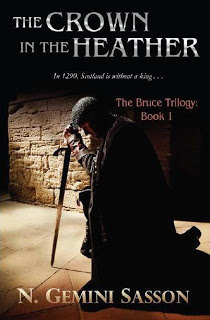
Today, The Crown in the Heather is being featured at Kindle Books for a Buck or Less. It's still on sale at a discount rate of 99 cents on Amazon Kindle.
Some other great sites where you can find good, affordable e-books are:
Pixel of Ink
Kindle Nation Daily
Daily Cheap Reads
Best Ebook Reader Lovers
The Frugal eReader
You can also follow most of these sites on Facebook. I do!
Happy reading,
Gemi

Published on May 24, 2012 01:30



